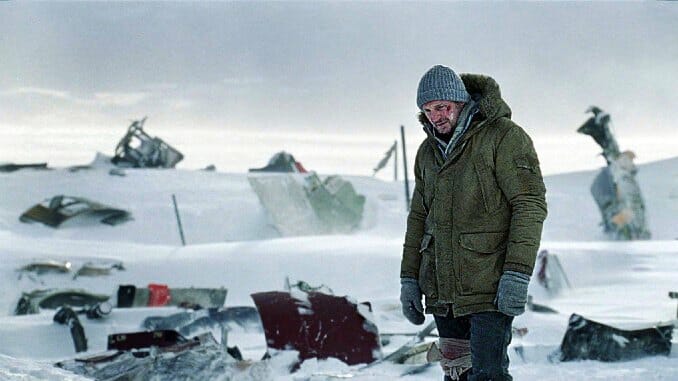The Grey: The Alpha of Old Man Action Movies

Liam Neeson had 16 years with his wife, the luminous, accomplished actress Natasha Richardson, before she died in a 2009 skiing accident at Mont Tremblant. This isn’t the kind of tragedy anyone gets over easily, or quickly, because no one ever really gets over the shocking death of their spouse. (They have two children as well, which multiplies total anguish by an exponential emotional value.) What Neeson had in 2009 that a scant few men in his shoes have is one of the greatest means of exorcizing grief on the planet: The movies. In 2012, Neeson joined Joe Carnahan for the Narc director’s fifth movie, The Grey, and perhaps in punching wolves found solace from his pain.
The Grey wasn’t the first time Neeson, a classically trained actor of prestige and great skill, played a stoic hero in an action or action-adjacent film. His Old Man Badass run started in 2008 with Taken, a franchise he would return to two more times, and continued with 2010’s The A-Team. Neeson kept it up with projects ranging from good to goofy to garbage through the decade: Unknown, Taken 2 and Taken 3, Run All Night, The Commuter, Cold Pursuit, The Ice Road and the 2014 trifecta of Taken 3, Non-Stop and A Walk Among the Tombstones. Next month, his latest, Blacklight, will drop in theaters. Maybe he got the taste for ass-kicking thanks to Pierre Morel and can’t stop chasing it.
Among these releases, The Grey is the standout for a number of reasons: It’s the most tightly paced, the best-acted by Neeson, the most unsparing, the most evocative. Above all else, though, the film has patho—not just in the script or on the screen but in the intangible, unpredictable details that the movies derive their magic from. The pathos doesn’t belong to Carnahan. It belongs to Neeson.
Carnahan originally wanted to cast Bradley Cooper as John Ottway, the grizzled sharpshooter/security officer/survivalist responsible for keeping the drillers working for an Alaskan oil outfit safe. There wasn’t much reason given as to why. Cooper simply dropped out and Carnahan rang Neeson. Here we are today. Imagining Cooper in the shoes that Neeson wound up wearing is impossible, not because Cooper isn’t a good, multifaceted actor but because he’s 23 years Neeson’s junior, which ill-fits the character’s personality and arc. John Ottway works because he’s been around. He’s seen some shit. He’s also lived long enough to love a woman so much that life without her is a bum deal he’d rather not take.
-

-

-

-

-

-

-

-

-

-

-

-

-

-

-

-

-

-

-

-

-

-

-

-

-

-

-

-

-

-

-

-

-

-

-

-

-

-

-

-








































